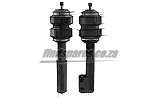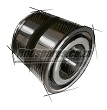Cars / Air Suspension
Advertising
Air suspension for Cars
Air suspension for cars can be powered, electric or compressed air. Compressed air suspension replaces conventional steel springs. If the engine is left for an extended period of time, the car will be brought down to the ground. The purpose of air suspension is to provide a smooth ride quality and in some cases, greater stability while driving.
One of the earliest implementations of air suspension was in 1920. Most Citroen brand cars come with this type of air suspension. Citroen introduced this technology back in 1954. GM attempted to introduce air suspension in commercial buses in 1958. Airbags placed on each wheel have sensors to keep the levels good and help the vehicle when cornering. The suspension settings are connected to the system memory seat, which means that the car should automatically adjust the suspension to the driver.
A control system in the Mark VIII also lowered the suspension by about 25 mm at speeds above 100 km / h to improve the aerodynamic performance of the car. Air suspension offers many benefits with the progress of new materials and technologies. This is especially important as car manufacturers strive to improve fuel economy by reducing vehicle weight and the use of active suspension technology allows for maximum efficiency.
Vehicles that use air suspension today include models such as Mercedes Benz, Rolls Royce, Cadillac, Lexus, Maybach, Land Rover, Range Rover, SsangYong, Subaru, Volkswagen, Audi, Ford and Lincoln. Citroën now produces Hydractive suspension, a computer-controlled version of the hydropneumatic system, which features both sport and comfort modes. New technology reduces air suspension height at high speeds and continues to maintains the height of the vehicle when the engine is not running.









